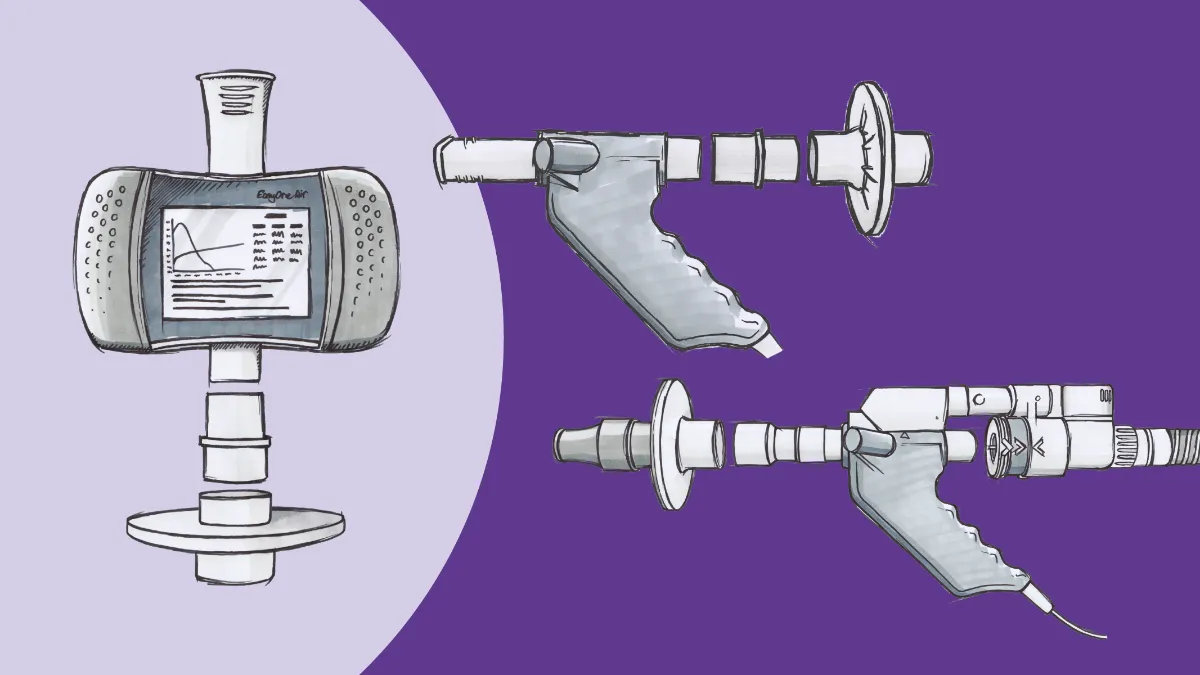How to series: How to use a filter with an ndd product

As the pandemic continues to affect workflows and lifestyles around the country, many people are still wondering if there is a safe way to perform spirometry and other pulmonary function testing. As many patients are increasingly concerned about things like disease progression, and as many offices look to get back to business as (mostly) usual, it is imperative that testing facilities figure out appropriate strategies to re-engage services while keeping their patients and staff protected.
Infection control: A top priority #
The ndd family of products presents a solution to this issue. The EasyOne line of products has been designed with infection control in mind. All external surfaces are easy to wipe clean with standard medical cleansing wipes, and the devices themselves are designed to be as compact as possible to minimize the area that needs to be cleaned. The ultrasonic TrueFlow™ technology underlying flow and volume measurements means no fragile parts come into contact with a patient’s breath, and all components that are in touch with the patient are single-use disposables.
Of course, the big concern with COVID-19 is exposure to aerosols and other exhalates from a potentially infected person. Fortunately, ndd has a solution here as well, in the form of inline filters compatible with all current EasyOne products. While the design of the single-use EasyOne FlowTube and Spirette protect the internal sensors, these inline filters protect your staff and other patients. They maintain their efficiency even at the relatively high flow rates inherent in spirometry testing, and they offer low levels of resistance compatible with recommendations from the American Thoracic Society (ATS) and European Respiratory Society (ERS). That means you can still count on the accuracy and dependability you’ve come to rely on with ndd measurements, with FEV1, FVC, and peak flow all remaining accurate and repeatable. These filters have been independently verified to have greater than 99.99% efficiency against bacteria and viruses, including SARS-CoV-2 that leads to COVID-19 infection (Viral and bacterial (VFE, BFE) filter efficiency: 99.999% up to 0.027 μm— Nelson Laboratories validation, 2011, 2012).
With such a safe, effective solution in place, you may be waiting to hear about the catch. The good news is there’s nothing to wait for; these filters are not only inexpensive, but easy to install on the full line of EasyOne spirometry and pulmonary function testing gear. Let’s take a look at how these filters go on to each device in the line.
How to use a filter with the ndd EasyOne Air #
To add a filter to the EasyOne Air, simply place the FlowTube as you normally would for a test. Next, attach the filter adapter to the back of the FlowTube. Finally, attach the filter to the adapter*****. That’s it!
How to use a filter with the ndd EasyOne Pro/Pro LAB #
The process to add a filter to the EasyOne Pro or Pro LAB is also quite simple. Simply insert the Spirette into the EasyOne Pro handle as usual. The filter attaches directly to the Spirette, no adapter needed!
How to use a filter with the ndd Easy on-PC & EasyOne Plus #
These devices use the same Spirette as the Pro and Pro LAB, so the process is the same. Install the Spirette as normal. Next, attach the filter adapter to the back of the Spirette*****. You’re ready to go!
Safe testing with ndd pulmonary function solutions #
Despite all the uncertainty surrounding the current phase of the pandemic and where we go from here, there is a safe path forward for pulmonary function testing. ndd devices are designed with infection control at their core. Patient-contact surfaces are mostly disposable, and those that aren’t are easy to clean. The inline filters offer maximum hygiene and protection with minimal impact on workflow. When you think pulmonary safety, think ndd!
For more information on ndd filters click here.
*For details, consult the respective Operators Manual.








